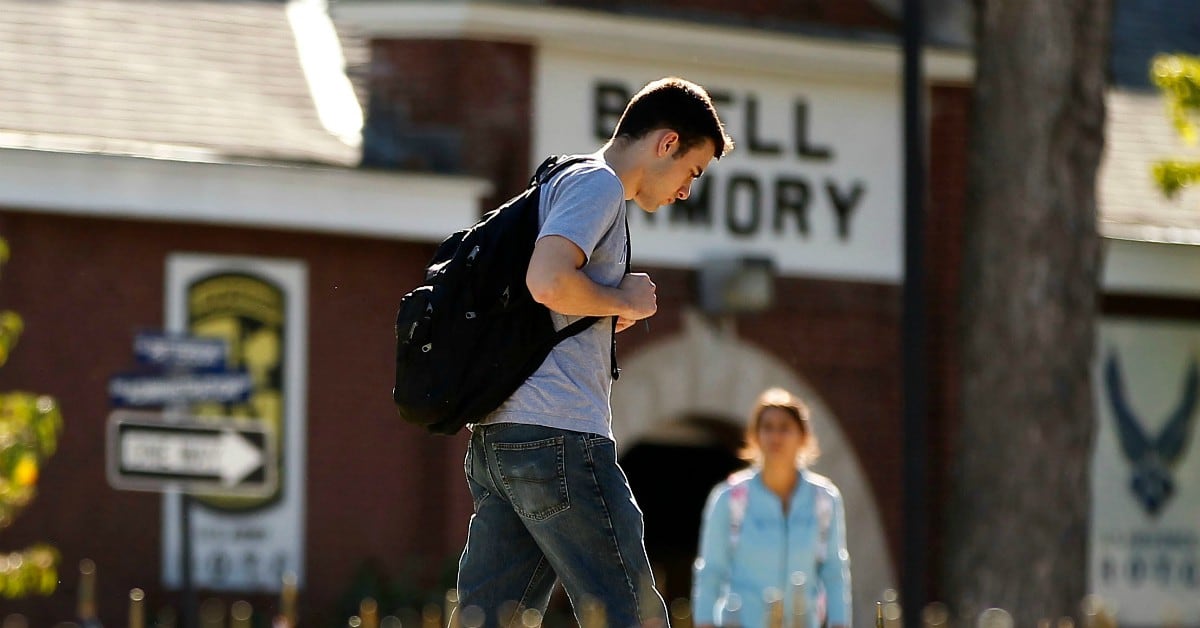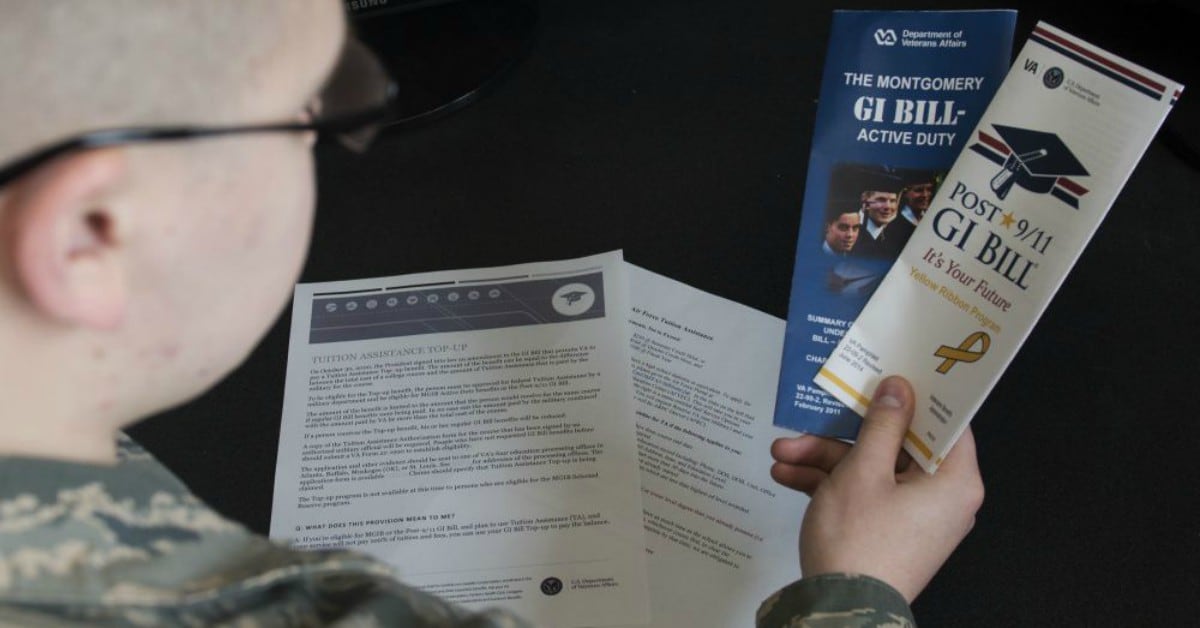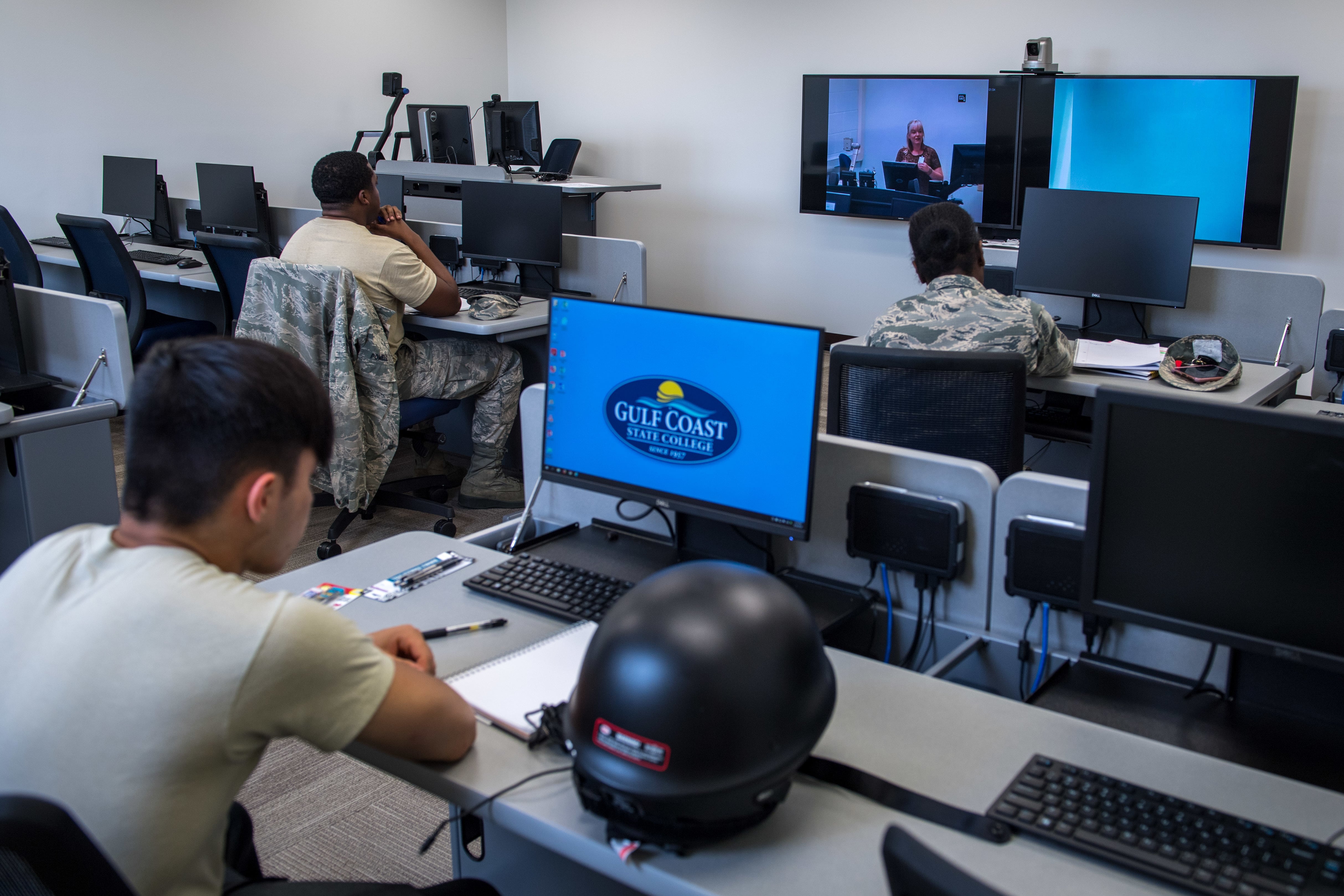A change in Post-9/11 GI Bill benefits rules earlier this month means some student veterans will be eligible for larger housing stipends this semester.
Veterans Affairs officials will now recognize any “hybrid training” — classes that are a mix of online and in-class instruction — as part of the calculation for full housing stipend rates. “If a student is required to attend any amount of on-site classroom training, the class will be certified as ‘residence’ training,” officials said in a statement.
Previously, for those classes to count towards the full housing stipends, instructors and students had to meet in person at least once every two weeks or the equivalent amount of time over a semester. Under the rule change, even a single in-person meeting could shift the classification from remote instruction to residence training.
RELATED

That’s significant because students using GI Bill benefits for online-only classes are eligible for living stipends of about $900 a month, whereas students in traditional in-person college classes routinely receive twice that amount.
The Post-9/11 GI Bill living stipend calculations are based on the zip code of the school and the corresponding Basic Allowance for Housing rates for an E-5 with dependents. For low-cost areas, like Ohio, that works out to about $1,200 a month this semester. For high-expense areas, like San Diego, it tops $2,600.
With the new hybrid training rules, student veterans will still need to be enrolled full-time to be eligible for the housing payments.
Lawmakers on the House Veterans’ Affairs Committee earlier this summer discussed the possibility of eliminating the remote classes stipend altogether, instead granting all students the full living stipend payouts.
RELATED

But veterans groups have warned such a move could dramatically add to the expense of the GI Bill program, and encourage some schools to push veterans into online-only classes in an effort to maximize profits.
The new stipend change went into effect on Aug. 15. VA officials could not say how many veterans may be affected by the new hybrid training rule.
More than 890,000 individuals used veterans education benefits in fiscal 2018, according to VA records.
Leo covers Congress, Veterans Affairs and the White House for Military Times. He has covered Washington, D.C. since 2004, focusing on military personnel and veterans policies. His work has earned numerous honors, including a 2009 Polk award, a 2010 National Headliner Award, the IAVA Leadership in Journalism award and the VFW News Media award.




